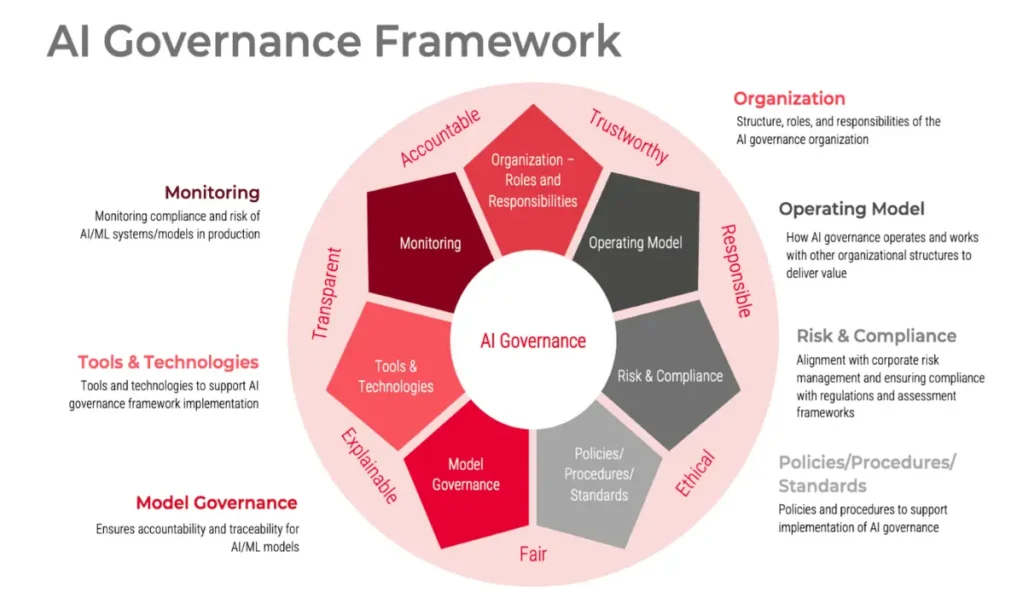
There’s no denying that generative AI is everywhere right now. From boardrooms to break rooms, the buzz is loud. But here’s the thing: for businesses aiming to drive real innovation ( not just incremental improvements), a GenAI strategy has to do more than automate tasks or spark cool demos. The real power of this technology shows when businesses use it to rethink how they create value.
We are not just discussing the use of AI to write faster emails or summarize meeting notes. A transformative strategy for generative AI connects your organization’s deep data assets, your intellectual property, operational insights, and financial drivers, with use cases that increase revenue, profit, and growth. When done right, it becomes more than a tech investment.
Beyond Efficiency: The Real Role of Generative AI in Innovation
It’s tempting to frame GenAI solely regarding productivity, automated content creation, code generation, or customer service augmentation. These applications can indeed bring quick wins. However, when treated merely as tactical improvements, their impact remains shallow.
To truly transform, generative AI must be viewed not as a tool but as a strategic innovation platform that reshapes how products are designed, how customers are engaged, and how ideas move from concept to commercialization. In fact, our Chief AI Officer in the recent podcast with UpperCrust Wealth shared the insights on how AI is redefining business across industries.
Back to the discussion, the true engine behind GenAI-driven innovation is how directly it’s tied to real business metrics, especially profit and loss. Every use case must be evaluated based on how it impacts top-line growth, cost structure, margin expansion, or capital efficiency.
And this shift starts in-house.
Enterprises must prioritize generative AI applications that uniquely leverage internal intellectual property, years of transactional data, proprietary algorithms, customer interactions, or operational workflows. By layering GenAI capabilities over these assets, businesses can build customized, defensible AI solutions that are powerful and launched before competitors replicate.
Three Strategic Use Cases of GenAI That Drive Innovation and Value Creation

Let’s examine three generative AI applications that illustrate how to convert AI capability into measurable enterprise value.
1. Reimagining Customer Engagement and Sales with GenAI-Powered Marketing
Marketing is no longer a one-size-fits-all discipline. Today’s buyers expect personalization at scale, and GenAI delivers exactly that. Imagine a marketing system that automatically generates personalized email campaigns based on individual customer behaviors, purchase history, and contextual sentiment data. Or product descriptions tailored in real time to different industries, buyer personas, and regional tones.
With GenAI, businesses can:
- Auto-generate high-performing content across SEO, paid ads, email, and social, customized to individual users, stages of the funnel, and even mood.
- Continuously test and learn which variations perform best using reinforcement learning models embedded in campaign engines.
- Use natural language interfaces to let sales and marketing teams query market intelligence and create customer proposals on demand.
The result? Higher conversion rates, lower cost per acquisition, faster campaign cycles, and significantly better ROI on marketing spend.
But more importantly, this hyper-personalization feeds into longer customer lifetime value, stronger brand affinity, and increased revenue per user.
2. Elevating Customer Service Through Intelligent GenAI Integration
Customer service is evolving, not just faster, but more attuned to the human side of every interaction. Instead of generic chatbots, GenAI-based systems can:
- Allow for sensing customer sentiment and adjusting the tone or response to fit the situation in real time.
- Recall entire histories of past interactions and suggest next-best actions personalized to each case.
- Auto-summarize calls, emails, or chats in real time, cutting agents’ manual overhead by up to 80%.
- Preemptively address issues using predictive models that detect intent and dissatisfaction early.
But here’s where strategy matters: all of this must be tied back to core business KPIs like lower churn, reduced support costs, improved customer satisfaction (CSAT) scores, and net promoter score (NPS) uplift.
3. Accelerating Product Innovation with Generative AI
Perhaps the most exciting domain for GenAI-driven innovation lies in product development. Whether it’s a new pharmaceutical compound, a software product, or a consumer device, GenAI helps businesses invent faster, test more ideas, and reduce the cost of failure.
Here’s how:
- Automated ideation: LLMs generate hundreds of variations of product features, names, UX flows, or even engineering schematics
- Synthetic data generation: GenAI can create simulated datasets that help test new models without compromising privacy or compliance in industries like healthcare or finance.
- Accelerated prototyping: Integration with CAD tools or code environments enables near-instant visualization of concepts.
- Customer feedback summarization: AI can analyze user feedback at scale and surface common themes, gaps, or innovation opportunities.
The advantage is not only speed but also informed decision-making. Teams can run more experiments, incorporate more data, and increase their confidence in what they take to market.
By directly reducing R&D cycles and increasing hit rates on product launches, GenAI contributes tangible improvements to revenue velocity and return on innovation investment.
The Strategic Imperative: Link GenAI Strategy to Financial Impact

Even the best use case won’t succeed if it doesn’t tie into a broader AI strategy and, more critically, if it doesn’t directly link to business outcomes. This is where many businesses stumble.
They deploy promising pilots and see isolated wins but fail to reach enterprise scale because they didn’t establish a value framework. The solution? Establish a GenAI value governance model, which includes:
- P&L Ownership: Every GenAI use case must have a clear business owner accountable for its revenue, cost, or margin contribution.
- Innovation Council: This cross-functional body, IT, Finance, Marketing, Product, Legal, ensures alignment with enterprise priorities and compliance guardrails.
- ROI Scorecards: Define leading and lagging metrics for every initiative, such as time saved, productivity gains, revenue uplift, customer satisfaction, and risk mitigation.
- Funding Models: Treat GenAI investments as venture portfolios. Allocate capital based on impact and iteration velocity, and sunset non-performing initiatives quickly.
Treat GenAI as the Backbone of Innovation Strategy
Businesses serious about innovation must now think of generative AI not as a technology or an approach, but as a strategic layer that spans the organization. Here’s how that unfolds in practice:
1. GenAI Embedded Across Functions
From HR to procurement to R&D, every team should have access to GenAI-powered assistants that enhance decision-making, automate repetitive tasks, and suggest creative alternatives.
1. GenAI Embedded Across Functions
Use internal data such as transaction logs, customer feedback, support tickets, proprietary documents, to fine-tune GenAI models unique to your business. This creates value no generic AI provider can replicate.
3. Innovation as a Core Capability
Build internal “AI studios” or innovation hubs where business and technical talent co-develop use cases rapidly. Rotate leaders through these hubs to build GenAI literacy at the top.
Conclusion
The conversation has moved past debating GenAI’s relevance. Now, it’s about how intentionally and quickly you will integrate it into your innovation strategy. As a GenAI strategy expert, we help businesses turn AI from a concept into a competitive advantage. By aligning GenAI use cases with financial outcomes and proprietary strengths, we guide organizations in building scalable, impactful solutions that drive innovation, accelerate growth, and future-proof their business models.

